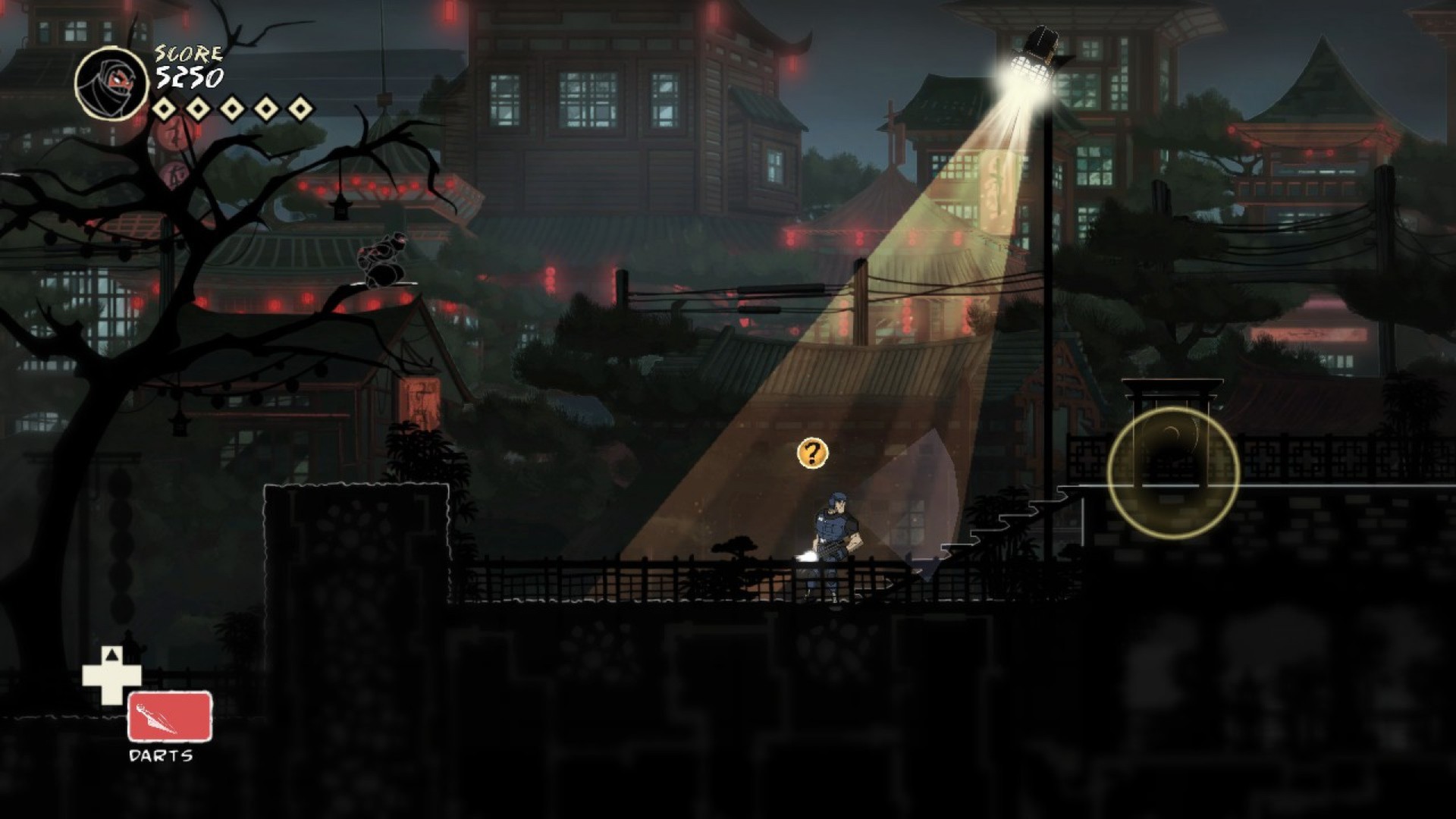

The stealth genre is one that game developers ought to approach with caution. Stealth-centered games are difficult to execute well, and it isn’t difficult to understand why. Any proper stealth game has to balance its genre’s three core gameplay concepts: waiting, sneaking and acting. Getting the equilibrium between the three can be difficult, and it varies from game to game: the Hitman series emphasizes the waiting aspect, and most of one’s time is spent gathering information and artfully setting traps (although one can choose to forego these elements and play instead a mediocre shooter). Assassin’s Creed, on the other hand, makes a headlong free-running dash for its action sequences and includes waiting or sneaking only as a faint, weak homage to its conceptual “stealth” origins.
No game in recent memory has struck so perfect a balance of these three elements as Mark of the Ninja, the side-scrolling stealth game from Vancouver developer Klei Entertainment. The game is charming and fun, if not very deep, and is worthy of praise for the sublime example it sets for the stealth genre. That is, Mark of the Ninja allows you to tailor your gameplay to how you like it without letting you drop any of the three core components — waiting, sneaking and acting — thereby circumventing the game’s challenge or turning into an action game.
In Mark of the Ninja you play — you guessed it — a ninja. The objectives to each level are pretty simple: using the myriad of ninja-y skills and tools at your disposal, get from point A to point B and complete some optional tasks along the way. Each level is populated by guards, who will shoot at you if they see you, and traps, which are, ironically, the more perilous of the two types of enemies.
The game is all about strategic movement from one point to another; gameplay depth comes from the player. In each scenario you have several choices. Your first is rather straightforward: will you attempt to peacefully sneak by the guards, or are you willing to get your hands dirty? By implementing a point system for evasion and diversion, the game does not favor one approach over the other. It is, however, impossible to complete the game without using the tools available to you — smoke bombs, noisemakers and the like — to slip quietly by the guards.
If you’re more of a, well, traditionally-oriented gamer like myself (see my article on violence in video games), you won’t have any scruples about taking out some guards. You may even opt to turn each level into a puzzle of sorts, drawing the guards away from each other and silently executing them one by one. If you finish one in a particularly gruesome manner, you may terrify the others, providing sufficient distraction for you to move about freely. Or, if you’re particularly impatient, you can run in headfirst; you may not find that option particularly attractive once alarm bells start ringing, and it’s likely you’ll have to make a hasty retreat.
Mark of the Ninja shines in its gameplay and in the way it allows you to take control of a rather simple scenario. To complement this, movements and actions are both very snappy and the game’s art is stylized and perfectly suited to its tone. In short, the game is a joy to play, both conceptually and experientially. It doesn’t ever feel clunky or cumbersome, and I did not encounter a single bug or glitch that hindered the gameplay.
That said, the game lacks many of the components that would make it more memorable. It is weighed down by an oppressive and clichéd storyline, mostly told through the cut-scenes in between levels. While the cartoon art style is clean and interesting, the script used for these cut-scenes is very dry. The game’s low production value comes through the clearest during these cut-scenes with their poor voice-acting and inconsistent sound quality.
There is also not much gameplay depth to be found here. What I’ve described is essentially the entire game, aside from the specifics of level design and the diversity of tools available to the player. It sometimes feels more like a very good online flash game than a full-feature download, but I suppose I shouldn’t compare it to releases with high production value since it’s an independent game with a much lower price point. Nonetheless, I think that it could do with a bit more complexity. Initially I had planned to do a pacifistic replay of the game, but after seeing all of its mechanics hashed out I’m not so sure that a replay is worth it.
Overall, Mark of the Ninja is a fun diversion that’s worth the experience. It plays very well and is perfect for intermittent homework breaks; it won’t suck you in and it isn’t too shallow to provide a good diversion. I picked it up on sale for $5, and I’ve more than played my money’s worth. If you’re looking for a grand stealth adventure, I suggest playing the recently-released Dishonored or eagerly awaiting the release of Thief 4. I recommend Mark of the Ninja to the gamer looking for something simple, yet different — you may find it in this game’s 2D stealth mechanics.